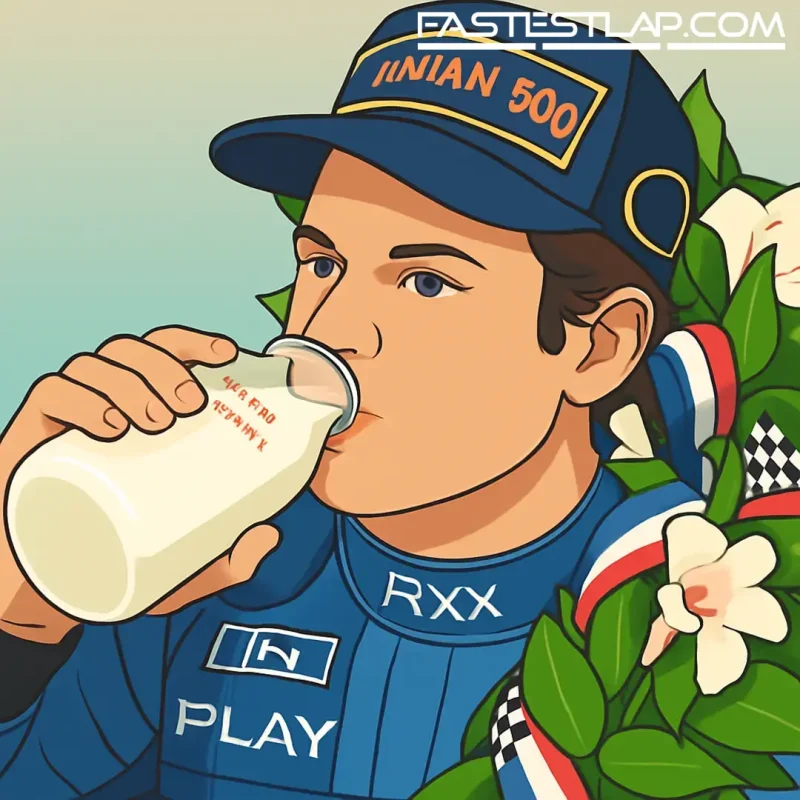Jacques Villeneuve would take the Indy 500 over an F1 win — and he didn’t blink when he said it.
On stage at Il Festival dello Sport in Trento, in front of a largely Ferrari-leaning crowd, the 1997 Formula 1 world champion was asked to choose between a grand prix victory and the Borg-Warner. His answer arrived faster than a Williams FW19 off the line: “The 500, because it’s the most important race in the world, with 300,000 people watching you. It’s a race, but it’s like a championship in itself.”
You could feel the room tighten. As reported by Gazzetta dello Sport, the moderators quickly shuffled the conversation along — which is a shame, because if anyone has the résumé to make that case, it’s Villeneuve.
The Canadian’s American odyssey began in 1994, when he rocked up to CART and stuck his car fourth on the grid for his first Indianapolis 500. He finished second that day and left with Rookie of the Year. Twelve months later he came back and wrote himself into Indy folklore. Penalized two laps for accidentally passing the pace car during the chaos of the opening laps, Villeneuve put his head down and delivered 150 laps of qualifying intensity. He unlapped himself. Then he won. By season’s end he had the 1995 CART title too.
“Normally, Indy is a race where you don’t drive to the limit,” he once told Autosport. “It’s a long race, it’s dangerous. But there we were, two laps down, and I had to do quali laps the whole way through.” That’s the day he still points to. And you understand why.
F1, of course, came calling. Williams signed him for 1996 and he wasted no time repaying the faith. A debut podium in Melbourne. A first victory four rounds in at the Nürburgring. And then 1997 — the year he stared down Michael Schumacher and Ferrari and came away with the title in Jerez, a season that still stings in Maranello. “Winning the championship against Ferrari was something special, something powerful,” Villeneuve said in Trento. “I know not everyone was happy about it, especially those of you here. But that’s how it was. And you could see it on the smug faces of even those from other teams.”
He’s told this story before, but the context matters. Villeneuve isn’t weighing one race against another, he’s weighing what they represent. An F1 win is a building block in a season-long campaign — rhythms, upgrades, points, damage limitation. Indy is a year distilled into one afternoon. There’s no tomorrow. The show is a culture unto itself, 33 cars, a stadium’s worth of people ringing a 2.5-mile rectangle, and a winner who becomes part of American sporting mythology. Villeneuve once admitted that winning at Indianapolis “opened the door at Williams” — that it changed his life. Hard to argue with the ladder he climbed next.
European purists bristle at the suggestion the 500 can trump a grand prix triumph. But to a driver who’s lived both worlds — and won at the sharp end of each — the calculus tilts toward the Brickyard. You can chalk it up to heritage, to scale, to that hair-on-fire comeback in ’95. Or just accept that for some, the biggest race in the world isn’t the one that takes you around Monaco’s harbor, it’s the one that starts with “Back home again in Indiana.”
Villeneuve’s F1 victory at the ’96 European Grand Prix, where he slipped past Damon Hill at the start and led every lap, reads almost tame by comparison — clinical, controlled, a proper Williams day out. Indy required something else entirely: resilience, risk, and a kind of nerve that only reveals itself when the wall feels like it’s inching closer with every lap.
So when Jacques shrugs and picks the Indy 500, he’s not taking a swing at F1. He’s telling you which day demanded more of him, which crowd he still hears, which bottle of milk tasted better than any champagne ever could. And if that ruffles a few feathers in Italy? Well, that’s on brand too.




